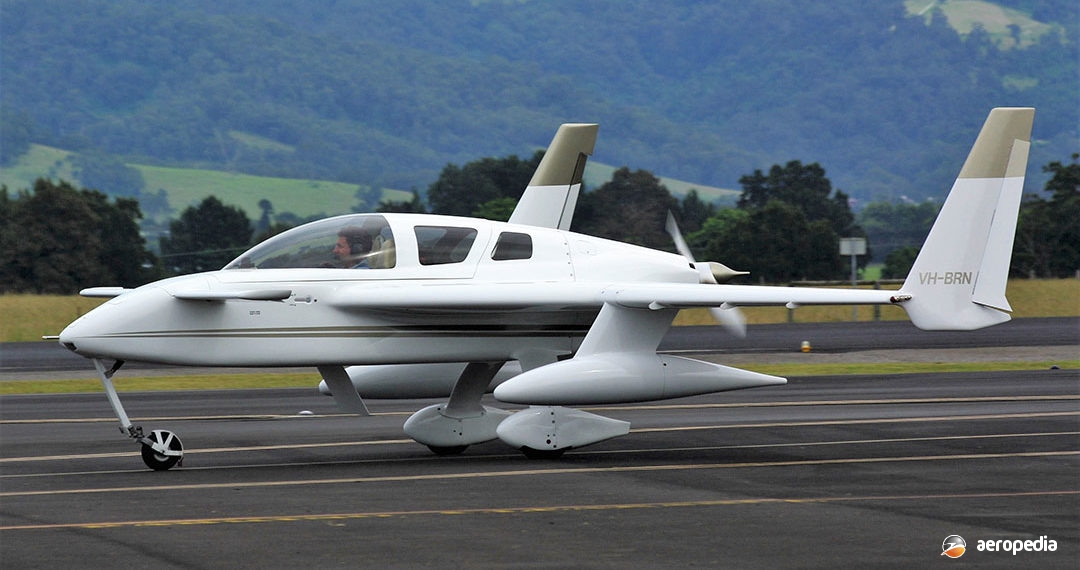Photograph:
Co-z Developments Cozy VH-BRN (c/n 686) at Albion Park, NSW in March 2008 (David C Eyre)
Country of origin:
United States of America
Description:
Two-seat high-performance sport homebuilt
Power Plant:
One 88 kw (118 hp) Avco-Lycoming O-235-L2C four-cylinder horizontally-opposed air-cooled engine
Specifications:
- Wingspan: 7.96 m (26 ft 7 in)
- Length: 5.12 m (16 ft 9 in)
- Height: 2.3 m (7 ft 6 in)
- Wing area: 8.88 m² (85.6 sq ft)
- Max speed at sea level: 306 km/h (190 mph)
- Max cruising speed at 2,440 m (8,000 ft): 290 kmh (180 mph)
- Stalling speed: 97 km/h (60 mph)
- Service ceiling: 6,100 m (20,000 ft)
- Range with max fuel at 225 km/h (140 mph) at 3,660 m (12,000 ft) with reserve: 2,896 km (1,800 miles)
- Empty weight: 386 kg (850 lb)
- Loaded weight: 680 kg (1,500 lb)
History:
The Co-z Developments Cozy was designed by Nathan Puffer in 1980 as a two-seat side-by-side development of the Rutan Long Ez, the first flight of the type taking place on 19 July 1982. Originally intended as a “one-off” aircraft for the designer/builder, and for a time known as the Puffer Cozy, interest was shown by a number of amateur constructors in procuring the type. The Co-z Developments Corporation was set up in Minnesota to market the type.
Accommodation was provided for two, with a large baggage space to the rear of the seats, but this could be converted to allow a third seat to be installed. Development led to the Mk IV with a 134 kw (180 hp) Lycoming O-360A engine, providing a maximum speed of 354 km/h (220 mph).
A small number of Cozy aircraft have been constructed in Australasia, the first being VH-OBV (c/n N156) in March 1990, followed by VH-CZY (c/n V105) and VH-COZ (c/n 564), and Cozy Mk IVs VH-OUR (c/n MK-0582) and VH-XCZ (c/n 154).
One example has been completed in New Zealand, this becoming ZK-COZ (c/n E749.AACA-2085).
In the United States a Cozy Mk III (N722) was converted to Cozy Jet configuration by installing a General Electric T-58 turbojet engine, this being the turbine which was normally installed in the Bell UH-1 Iroquois helicopter. Fuel capacity was increased to 416 litres (92 Imp gals) and weight was increased by 363 kg (800 lb). It was flown to the Experimental Aircraft Association (EAA) event at Oshkosh in Wisconsin and placed on display.

